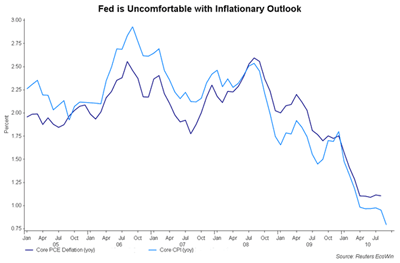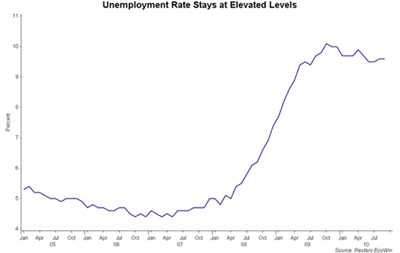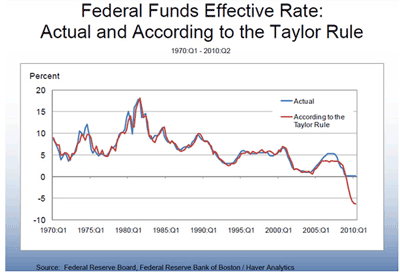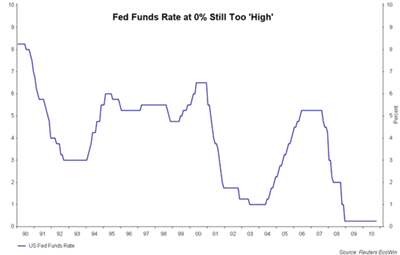The Fed is almost certain to announce QE2 at the November FOMC meeting. Indeed, comments from Fed officials in recent weeks have indicated further accommodations are required to bring inflation and employment back to levels the FOMC sees as consistent with its dual mandate. We expect policymakers are inclined to a more gradual approach of monetary easing, i.e. to purchase long-term Treasury securities of around $100 billion per month, without upper limit on the total amount and being reviewed on every FOMC meeting. At the same time, the Fed may modify the language used in the accompanying statement as chairman Ben Bernanke said at the Boston Fed conference that he would examine ways to achieve greater easing through a new communication strategy.
The market has speculated a range of options that the Fed has considered on the implementation of the asset-buying program. For example, the Fed may start the program by announcing $500 billion and spanning six months at the meeting this week. It may also announce a contingency plan—purchasing $100 billion per month until the next FOMC meeting and indicating the plan will continue until economic developments show signs of improvements. Of course, the Fed may also disappoint the market by making no commitment or announce a small amount of purchases. While we believe the last option would be the least likely, the ultimate size of the first two options would be around $1-2 trillion dollars.
Why is a $1-2 trillion-program justified? New York Fed president William Dudley said that $500 billion of purchases is equivalent to a 50-75 basis-point reduction in the Fed funds rate. In a report titled “Large-Scale Asset Purchases by the Federal Reserve: Did They Work?” New York Fed estimated that the large-scale asset purchase (LSAP) program the Fed implemented in November 2008 to November 2009, worth a total of around $1.75 trillion, resulted in a -91 basis-point decline in ten-year Treasury yield. That translates to about 20 basis points for a $500 billion program. A report by the San Francisco Fed projects that a 50-75 basis-point decline in the long rate would be a 1.5% - 3% cut in the funds rate, suggesting a -20 basis-point drop in ten-year yields has about the same economic effect as a 60-80 basis-point decline, an estimate similar to Dudley's, in the Fed funds rate.
Article Continues on Page 2
|pagebreak|Taylor Rule suggests that the current Fed funds rate should be -5% (or lower). If the previous QE program had taken down the rate by around 2.5%, further reduction of 1.5% - 2.5% would be needed in QE2. If we use the above-mentioned estimates, an ultimate $1-2 trillion would be needed to achieve the goal.
We believe the Fed would prefer a gradual easing approach instead of announcing such a huge amount of asset buying as the economic backdrop has improved markedly from the 2008-2009 period. Accompanying asset purchases, the Fed will also likely change the languages used in the statement. At the Boston Fed conference, chairman Ben Bernanke said that “clear communication about the longer-run objectives of monetary policy is beneficial at all times but is particularly important in a time of low inflation and uncertain economic prospects such as the present.” Moreover, the FOMC will continue to “actively review its communications strategy with the goal of providing as much clarity as possible about its outlook, policy objectives, and policy strategies” because this would provide “additional means of increasing the degree of policy accommodation when short-term nominal interest rates are near zero.”
The Fed should modify the reference that “the Committee will maintain the target range for the federal funds rate at 0 to.25 percent and continues to anticipate that economic conditions, including low rates of resource utilization, subdued inflation trends, and stable inflation expectations, are likely to warrant exceptionally low levels for the federal funds rate for an extended period” as “extended period” is a particularly vague concept for the market.
By the Staff at ActionForex.com
























